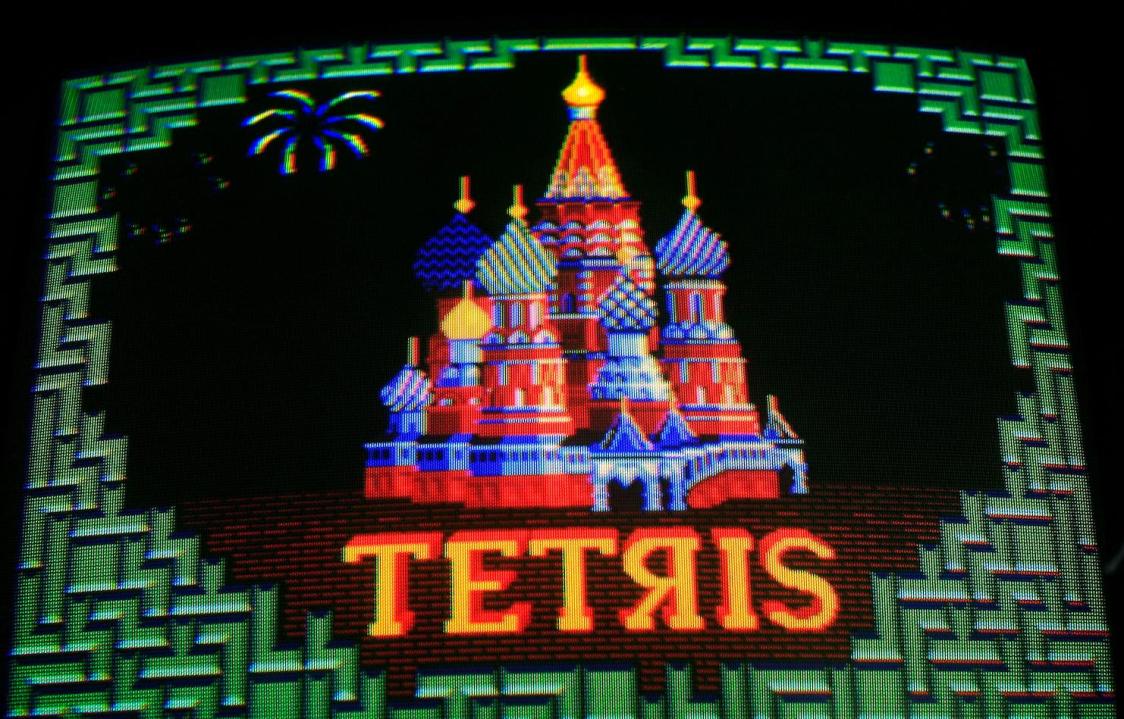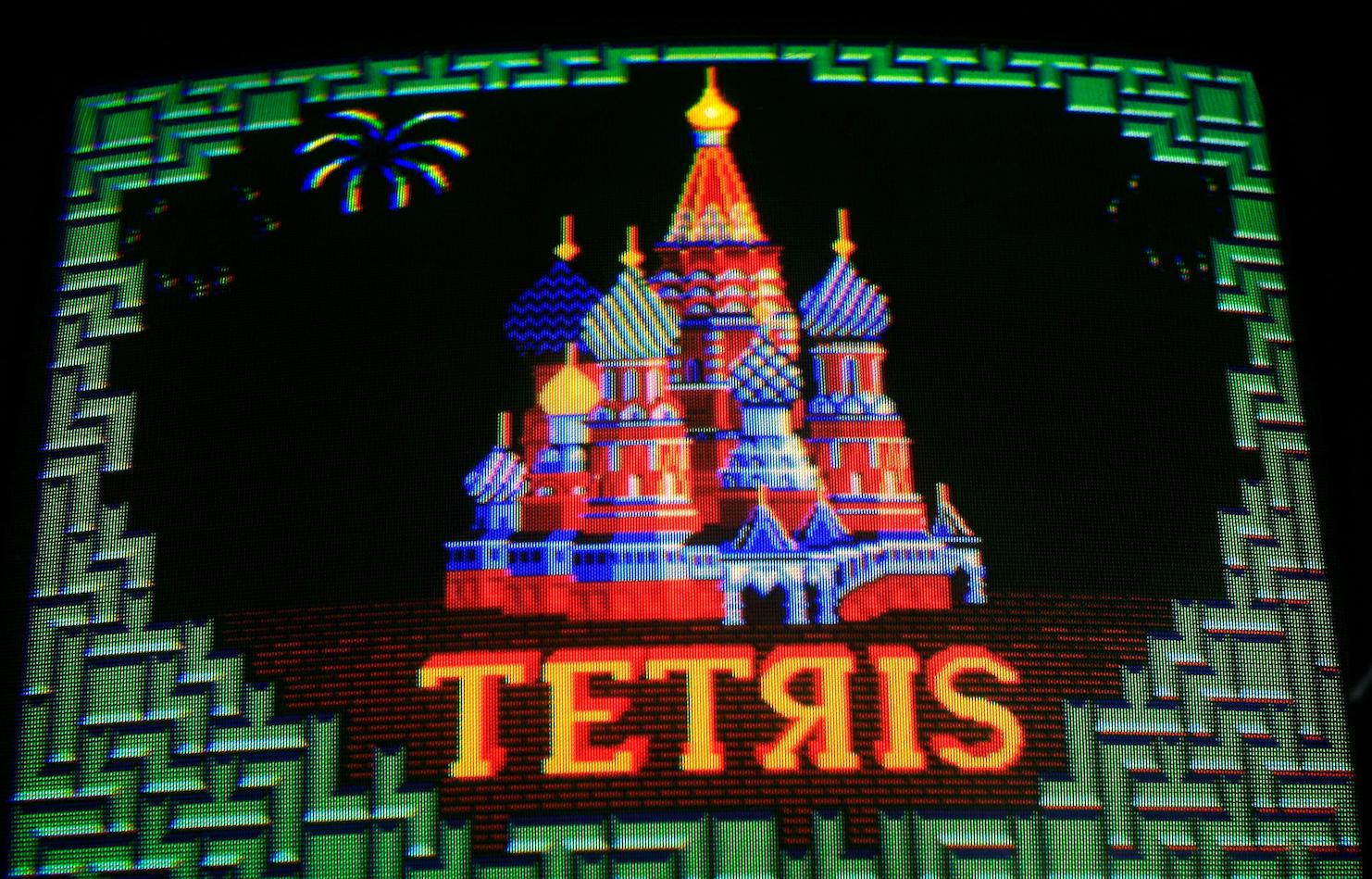I can remember exactly where I was when I first fell in love with Tetris. It was the student bar of Oriel College, Oxford, in the very early 1990s. I’d gone to visit my friend Ed, and we bunged a few 10ps into the sticky arcade cabinet in the corner of the bar while we chatted and drank our beer. The first game was moreish. By halfway through the second my goose was cooked. That summer I visited the Oriel Bar a lot. I wasn’t visiting Ed. I was visiting the Tetris machine.
Against modern video games – with their complex narratives, orchestral music, photorealistic 3D graphics and vast worlds to explore – Tetris looks like a pushbike racing a Lamborghini. It’s garishly coloured (though it doesn’t need to be coloured at all), bleepy and two-dimensional. It does one thing, and it keeps doing it until the game is over.
Tetris is, you could say, the last gasp of Soviet soft power – and what a gasp it is
That thing, in case there can be anyone reading this who doesn’t know, is this. Coloured blocks fall slowly, one by one, from the sky. They appear in a random order and come in seven possible shapes – any combination of four squares bolted together that you can make. There’s a 2×2 square, a 4×4 girder, a left-handed L-shape, a right-handed L-shape, a nicely symmetrical thing that looks like a hat (a 3×1 strip with a single square centred above it) and then there are the S-shapes and the Z-shapes. Those are the complete bastards.
The extent of the player’s input is either rotate left, rotate right, move left, move right, or drop down. When each of these pieces reaches the ground, that’s where they stay. You try to drop the successive pieces on top of the previous ones so that they tesselate (maths-speak for making their knobbly bits interlock) and when you have so placed them that a solid line of blocks fills the ten-block-wide playing area from left to right, that bar disappears and the blocks above fall down to fill the space. That’s it. You keep playing until the screen fills up.
The genius of Tetris is precisely its simplicity: a testament to the way in which what really makes a videogame work – that almost numinous quality of playability has nothing whatever to do with fancy graphics or expensive voice actors. Tetris has sold hundreds of millions of copies since its invention in 1985, dramatised in the soon-to-be-released Apple TV film Tetris. It is available on more platforms than any other game in history. It is, you could say, the last gasp of Soviet soft power – and what a gasp it is.
When you’re playing Tetris, and playing it well, you enter that trancelike state of concentration that psychologists call ‘flow’. But it isn’t purely enjoyable. There’s anxiety underpinning your state of absorption. I can’t remember if the music speeds up as you play – it definitely feels like it does – but the game itself certainly gets faster. You start out leisurely, in command. The blocks hang in the game’s dark sky, and it feels like you have all the time in the world to rotate and place them. When you clear a line neatly you get a carpenter’s sense of completeness, the satisfaction of watching something tesselate exactly and disappear.
But they start to drop faster. You make mistakes – a misplaced, or mis-rotated piece leaves an unfillable gap, or you drop one of the L-shape ones end-on next to the hole you intended to plug. And those mistakes compound. As the clumsy bricolage starts to climb towards the top of the screen, the new pieces have less far to fall, which means less time to manoeuvre them. And still, they’re moving, bit by bit, faster. A lucky placement, the satisfying clang of two or three lines clearing at once, and a welcome hit of dopamine. Relief. Breathing space. You’re back in the game. But they’re still coming, and did I mention those S-shaped pieces are bastards?
Moments of exuberance; an undertow of anxiety; and the knowledge the very best you can hope to do is postpone the inevitable. There’s a metaphor there, somewhere. You leave the fuggy, smoky confines of Oriel College bar with an elevated heart rate, a pocket empty of 10p pieces, and – as many a Tetris addict can testify – a giddying new outlook on the world. You regard the shapes of buildings against the skyline as you walk home and think: an S-shaped piece would fit in right there.







Comments